Don't take Knoxville's Sunsphere for granted — here's what it could have looked like
Knoxville's golden globe in the sky easily could have been a silver sphere on a slab.
From its inception, the structure built for the 1982 World's Fair was always round. But while some early designs towered high above the streets of Knoxville, others appeared to hover near the ground.
Don Shell, now CEO of Community Tectonics Architects, told Knox News the company always thought of the structure as a "monument to the sun" — even when the designs shifted. Much of the design team's research came from staring at the sky.
No matter the public perception, the end result was unlike any other structure the world had seen. But it could have been something else entirely.
WORLD'S FAIR BEER: We taste 1982 World's Fair Beer so you don't have to
WORLD'S FAIR FACTS: What made the 1982 World's Fair special? A crown prince, a pricey Pez and Cherry Coke
Inception to approval in just one day
No one had background building a spherical structure of this magnitude. Community Tectonics later found out the Sunsphere's permanent, multistory, fully occupied spherical design was one of a kind.
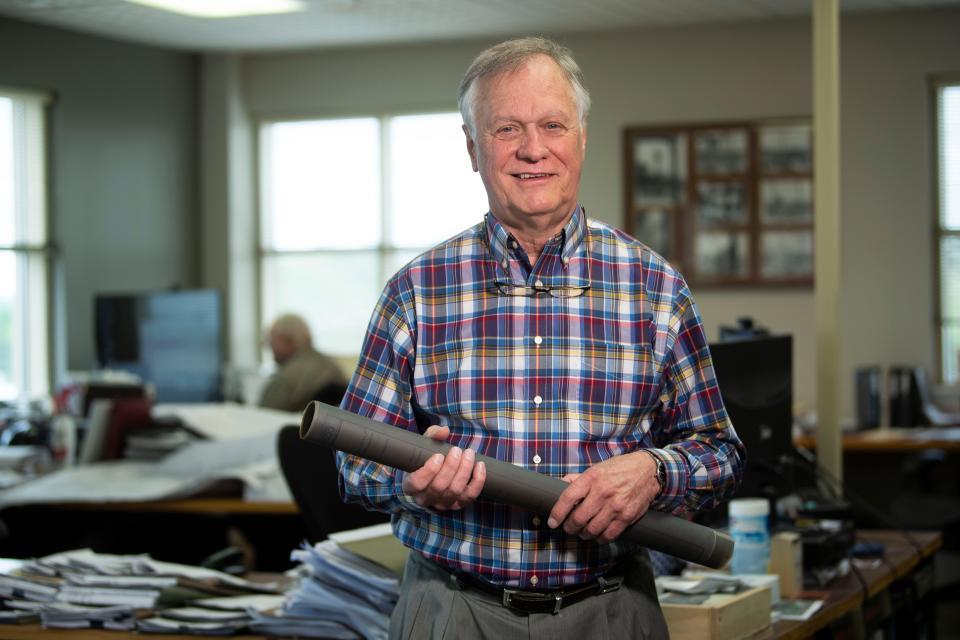
Hubert Bebb, the company's founder, had sketched an oil rig for the 1933 World's Fair in Chicago.
He and Bill Denton, company president at the time, were meeting with local McDonald's operator Litton Cochran in 1979 when the restaurateur and fair board member informed them the energy-themed exhibition did not have a theme structure like past fairs.
"(Cochran) said several ideas had been proposed, but none appealed to the board," Bebb told Knox News in 1982. "He said, 'If you're interested, we'd like to have some of your ideas.'"
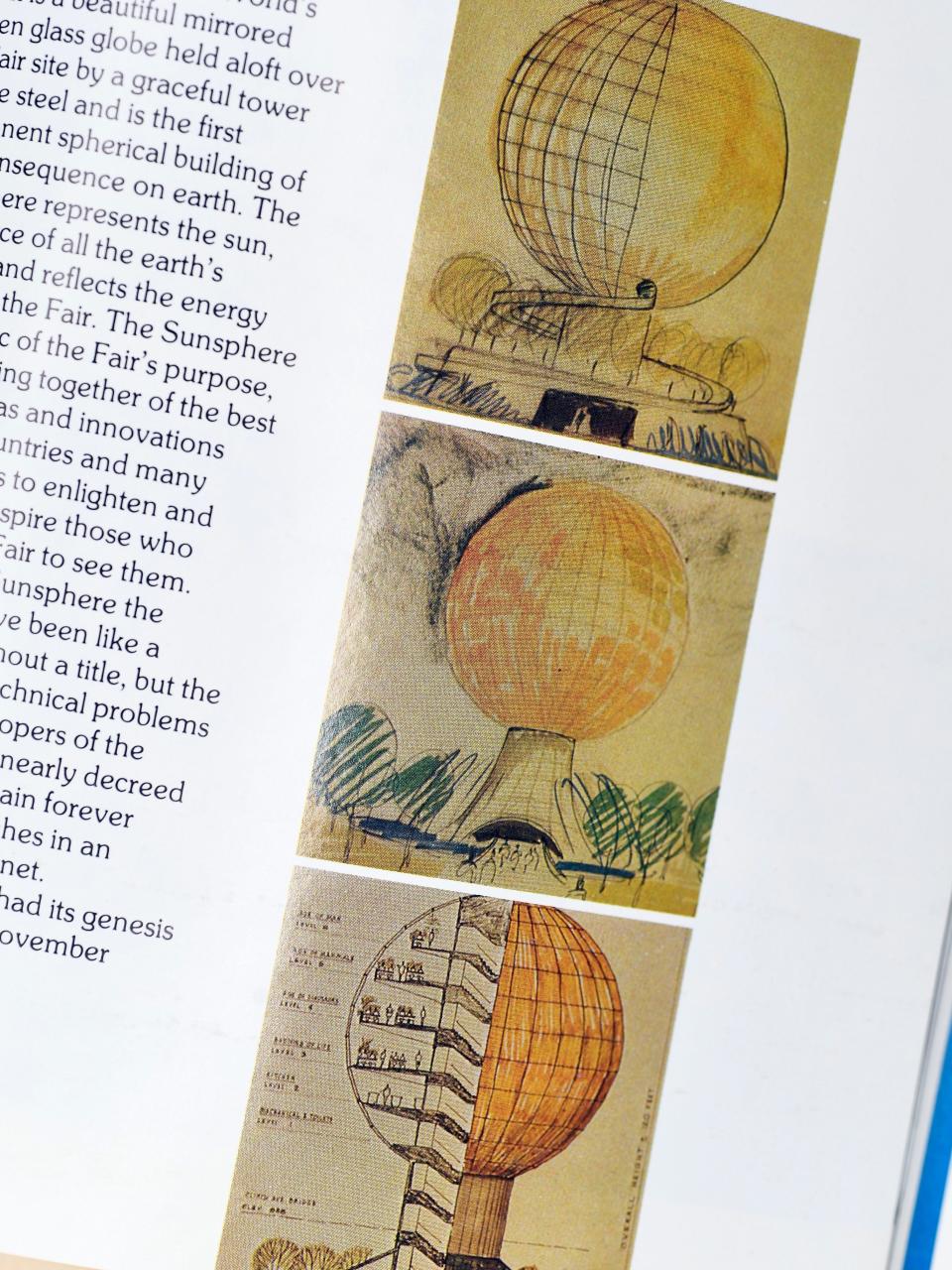
Legend has it Bebb and Denton worked at opposite ends of a conference room table immediately after the meeting.
A Sunsphere book produced by Community Tectonics in 1982 states the duo quickly designed the theme structure and drafted a plan, sending a courier to deliver the concept to Cochran's home within hours — just in time for the following day's fair committee meeting. That's where the Sunsphere was first presented.
Nearly concrete, tower shifts to steel
One early design for the Sunsphere showed the globe on a pedestal that could be entered through a tunnel. Another low-height design showed a walkway wrapping around the sphere, leading to its entrance.
Some sketches were "cartoonish to the degree they probably couldn't be built," Denton told Knox News in 1982.
When the tower design was chosen, the architects were faced with another challenge: building codes. Any building taller than seven stories had to be built of concrete for fire safety, according to Knox News archives.
Steel was preferable and substantially cheaper, so Denton went to a zoning meeting with this analogy: The Sunsphere is like a building on a hill, he said, and its tower is like the ground.
"We knew this was going to be an unusual structure," Shell told Knox News. "They kind of concluded, 'We'll count it a five-story, less than seven stories — it just happens to be 200-some feet up in the air.'"
Costs were reduced, but challenges awaited around every corner.
The team had to ditch some of its big ideas for financial reasons, and many of those visions were related to theming.
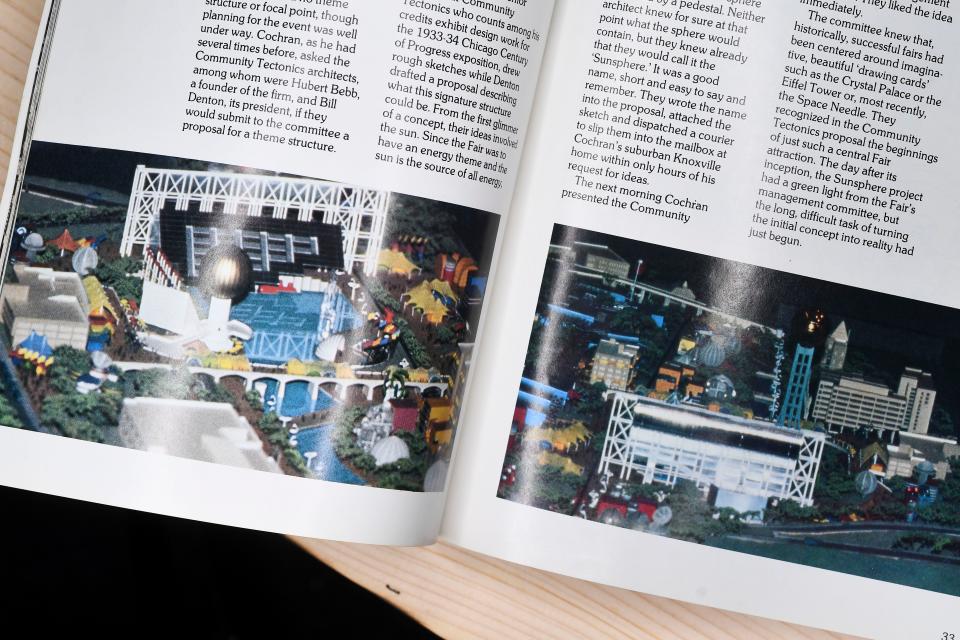
Each floor was going to be named after a geological age, with murals and sound telling the story of the sun, according to Knox News archives. The team also had to abandon its color scheme for each floor: yellow, orange, red and white — the same colors scientists believed matched the sun's layers.
WORLD'S FAIR DEBATE: What was the single biggest impact on Knoxville?
COOL STUFF: From giant toys to chili, these Knoxville staples exist thanks to the 1982 World's Fair
A silver sphere? Not very sun-like
Developers also had a hard time finding anyone who could provide gold-tinted windows at a reasonable cost and decided to switch to silver.
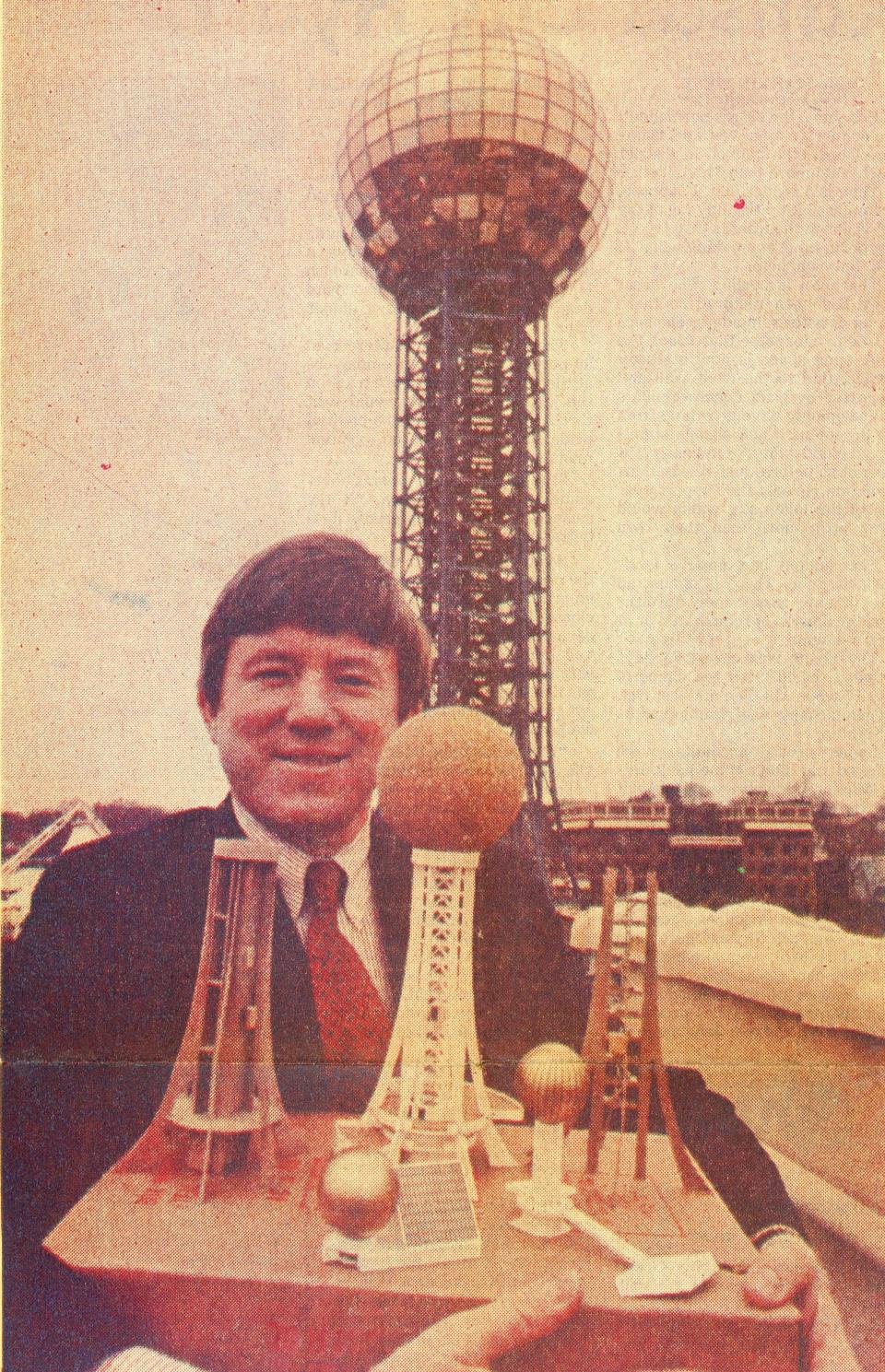
Knox News reported in September 1981 that plans for gold windows were back on the table, and glass made of 24-karat gold dust was going to make the building more energy efficient.
Shell said he and other Sunsphere designers envisioned glass elevators that would provide views of the city on the way up, but that was too expensive.
So was the idea for a revolving floor — especially when the "stalk," originally blue to match the sky, had to be nearly 100 feet taller than initially conceived for visibility, according to Community Tectonics.
"It was in the worst place on the site," Shell said about the Sunsphere's location. "All the people say it's got to be high enough to see it. And yet, they put us on a foundation that's 30 feet below the main Clinch Avenue, which is the main path of which you see things."
Subscribe to The Scruffy Stuff
iTunes | Google Play Music | Spotify
The increased height meant the globe had to be smaller. Originally designed as 86.5 feet around to proportionately match the 865,000-mile diameter of the sun, the size was reduced to roughly 74 feet around.
Costs controlled Sunsphere components
The lack of financial backing was the main challenge in developing the Sunsphere. The structure was almost scrapped altogether.
"Cost estimates greatly exceeded income," Denton said in 1982. "So, the Sunsphere died no more than a week or two after the World's Fair Committee approved it. This is the kind of stuff we can tell now. But back then, I was the only one who even knew it for a week or two because I was afraid to tell anybody."
With no money set aside for a theme structure, Community Tectonics became both designer and developer.
"We were that for a long time — longer than we wanted to be," Shell said. "We were OK financially at the time, but not enough that we could bankroll a $3 (million) or $4 million building."
Banks were already busy with commitments to other World's Fair projects, he said, and it wasn't until a return on investment study was conducted that anyone was interested in financing the project.
Return would come from patrons dining at the structure's planned restaurants, which people seemed to enjoy during the World's Fair — so much that a Kentucky woman was shuffled out of the bustling Sunsphere on a record-breaking attendance day before she could pay for her meal, according to Knox News archives.
She was told to pay for her bill by mail, and that's exactly what she did — $3.65 for the food and a $1 tip for her waitress.
Unlike Tower of Power, it 'shimmers'
World's Fair visitors enjoyed the Tennessee Amphitheater and Saudi Arabian pavilion, which World's Fair Magazine gave a three-star, "don't-miss" rating at the time.
But the Sunsphere was given a zero, a score reserved for exhibits you should "go out of your way to avoid," according to Knox News archives.
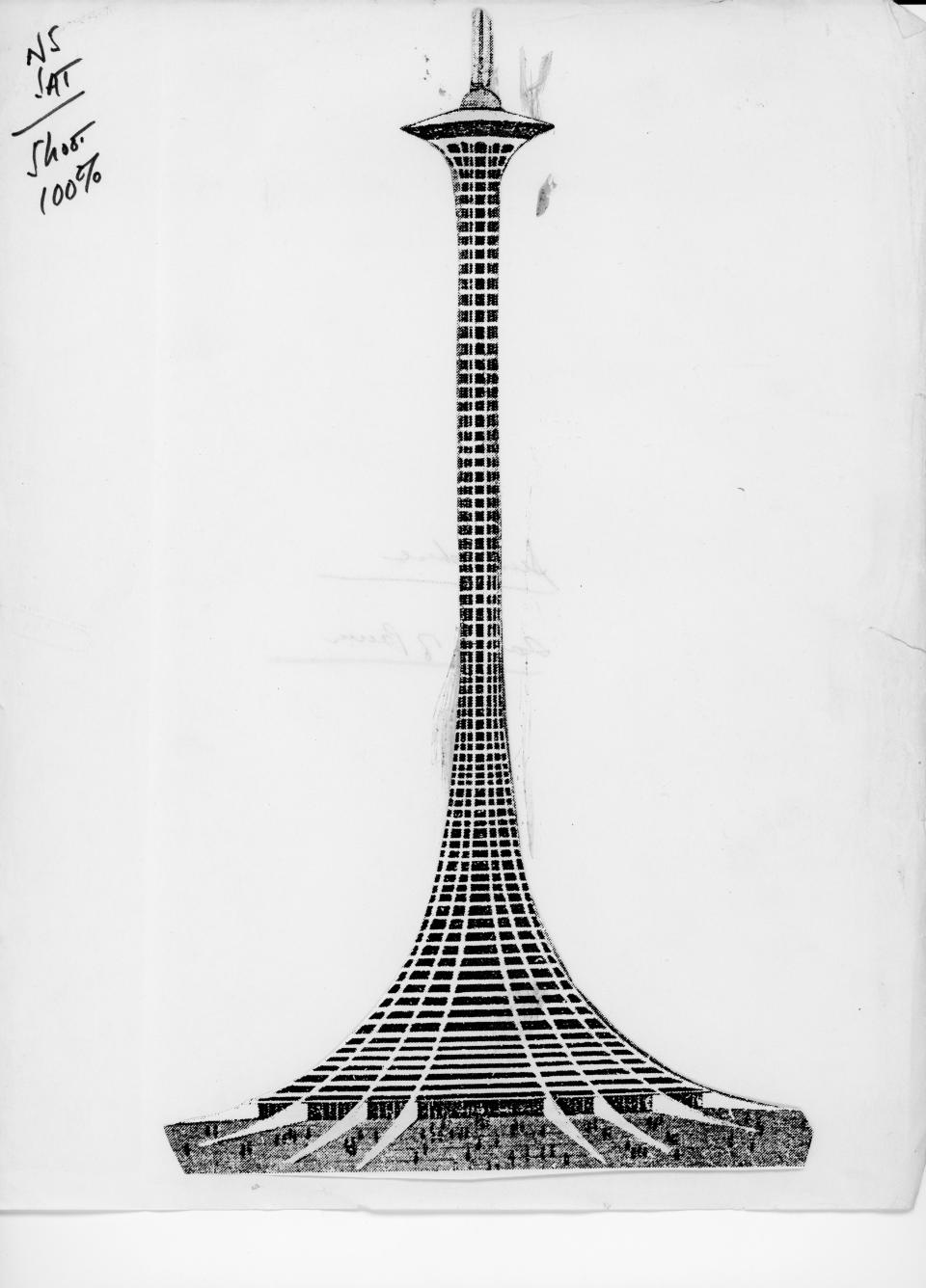
"Gaze on it, but don't bother to go up in it," the magazine wrote. "Scuzzy."
Following the fair, Sevierville architect Marc Cardoso filed a $31 million lawsuit that alleged World's Fair officials stole his copyright for the 500-foot "Tower of Power," a design promoted by the Downtown Knoxville Association in 1977 as the proposed theme structure, according to Knox News archives.
The tall and skinny tower, which looked more like Seattle's Space Needle than the Sunsphere, was going to include a revolving restaurant at the top.
A federal judge dismissed the suit in 1983, stating the "use of towers in architectural designs is certainly not unique."
But despite the negative press the Sunsphere received, the structure has proven to be the most recognizable piece of Knoxville's skyline, with a unique shape that's regularly incorporated in company logos and T-shirt designs. It is the backdrop for festivals at World's Fair Park and a timeless icon that has attracted countless visitors to the Scruffy City.
Even the 12-year-old great-great-grandson of Gustave Eiffel, the designer of the Eiffel Tower in Paris, visited the Sunsphere in 1982.
"The Sunsphere is already a landmark," concludes Community Tectonics' book from the same year. "The curve of its golden sphere can be see rising over the buildings surrounding it from almost any approach to the city.
"On sunny days it shimmers; at night it glows. And, until someone builds another, it remains unique in the world, a modern spherical monument to the sun."
Ryan Wilusz: Knoxville's downtown explorer and urban reporter
Instagram | Twitter | Email | 865-317-5138
Enjoy exclusive content and premium perks while supporting strong local journalism. Visit knoxnews.com/subscribe.
This article originally appeared on Knoxville News Sentinel: Sunsphere built for Knoxville World's Fair was nearly silver
